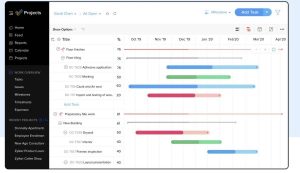Get insights into integrating isolated data across various teams to fuel data-driven decision making and maximize marketing performance.
Data silos — isolated collections of data within different departments or systems — hinder companies from gaining a complete picture of their customers.
This is the first of two articles exploring data silos in marketing. Part one focuses on:
- Significance, effect and root cause of data silos.
- Breaking down silos with processes and tools.
- Beginning the integration journey.
Part two will be about:
- Overcoming obstacles.
- Planning for the future.
Ultimately, the goal is to highlight the significance of integrated data — the antidote to siloed data — and its role in unlocking the true potential of marketing.
Significance, effect and root cause of data silos
Better data management can save an average organization $ 12.9 million annually, according to Gartner. Part of better data management is ensuring that data maintains a certain level of quality and accessibility.
Data siloed within an organization may be kept very clean and accessible to those in the organization. Still, the power of data in decision-making often means that some data must be combined with data from different areas of the business.
Lines of business within a company manage more enterprise applications than IT, about 56% of all company apps, per a 2021 Productiv report. That figure was up 4% year over year. The company compiled and analyzed data on 30,000 applications used by 190 companies.
Each application generates data that may be accumulated in a normalized, centralized database and made available to all. Data that arise from applications within the company may not be designed to be cross-referenced by other applications.
Applications create data, but AI also adds to the data load in today’s environment by creating new datasets used exclusively by AI algorithms.
Silos make it difficult to use information to help the entire company. The data is underutilized or used to solve only departmental issues. So why do these silos exist? The root causes of silos are:
- Culture.
- Technology.
- Organizational design.
Culture
Culture is set by leadership and practices and creates the company’s operating model. If your company is a start-up, you might have a culture valuing quick actions over careful consideration. These actions are always designed to “stay ahead of the competition.” People make decisions and take actions fast in this setting.
Creating your own data source to contribute to a group goal might be accepted and expected. These actions, however, may create data sources that are expedient but unconnected, a silo.
Technology
Technology also plays a role in establishing silos. If marketing installs a new customer database to help manage an online effort, other applications must be evaluated for their work with marketing’s new entity.
- How will sales, services and products interact with or use the data that marketing creates?
- Will technology be responsible for bringing these functions together or is one area more technically advanced than another and cannot be relied on to integrate?
This is especially true in cloud environments, where data sources are frequently created and managed without regard for integration. Although some companies — like Snowflake — have seen this integration as a market opportunity, most applications have not bridged this gap.
However, combining data in the cloud has unique issues, especially if the data elements were not designed to connect. Although AI algorithms can help manage, connect and align the data, issues associated with privacy and use must be managed in a marketing environment.
Organizational design
Company organization also plays a vital role here. It begins with whether IT manages data or is managed by a business organization such as operations, finance, marketing and sales. The organization that controls data collection, management and use often sets the tone for who can access and use it.
When IT manages data, it becomes part of the application landscape and can be overlooked for cross-organizational value. IT will also be most concerned with the security and accessibility of the data, not necessarily its quality or cleanliness.
If another business organization controls the data, then departmental concerns may trump corporate ones. For example, if finance controls enterprise-level data ensuring accurate transactions may be the first concern. For sales or marketing to use this data, they may need to clean up contact information and associate different levels within a company with their contacts.
Another example of misalignment between data sources is with levels within a company. Sales may be most interested in speaking with the executive in charge of the product, but the contact information gleaned from finance gives only the clerk who handles invoices.
Siloed data is a big challenge for marketing. When customers aren’t easily identified in the data, it produces subpar results. This, in turn, leads to a negative customer experience, inconsistent messages, irrelevant recommendations and missed chances for personalization. All that makes for inefficient resource allocation, inaccurate campaign targeting and the inability to measure performance accurately.
Breaking down silos with processes and tools
What can be done to minimize — if not eradicate — the impact of silos? To begin, the company needs an overall goal for its customer information.
Does the company see customer data as necessary enough to maintain it in its data source, such as customer data platforms (CDPs)? If so, the first thing to do is get the information in all the other applications and data sources.
This requires a process that starts when a customer first engages with the company and generates data captured in different systems, like product purchase, service, payment and support. Does your company have a start-to-finish diagram of these interactions?
Other technologies to consider are ones that consolidate and manage customer data from various sources, such as a CDP. Data warehouses effectively handle large volumes of data — from structured to unstructured to streaming.
Then, integration tools are needed to make data collected from various sources usable. These tools must be able to automate data transfer between databases and synchronize it in disparate systems.
Next, you need data quality tools and processes. The tools identify, correct and improve quality issues from when the data was collected or transferred to company databases. Quality is essential because decisions will be made on this data.
Beginning the integration journey
Step 1: Seek first to understand
Assess the current data landscape. Where are the primary data sources? Who is managing those sources today, and what level of quality are they maintaining?
Identify data silos, understand data sources, and evaluate data quality. Are the people in charge of the silos willing to discus a consolidated customer view of data?
Step 2: Establish data guidelines
These guidelines document what you find in step 1. Who are the data owners of the sources you uncovered? What access do the owners allow? What are their data use guidelines? For example, do they allow anyone access or do you get access only after being lectured on the data and what it means?
Step 3: Establish a data integration plan
Which of the identified data sources could provide company-wide information if combined? How will the integration be accomplished? What data source will the team use when these sources are combined? Document this plan.
Step 4: Enhance data quality
Once data has been combined, begin a data quality program designed to continue for the life of the data source. This includes a plan for cleansing data and validating it for integrity and accuracy.
The program needs to include a plan for standardizing data to ensure consistency of customer definition across the organizations. Your data source should be able to help you answer questions such as:
- How many customers do we have?
- What is their average level of spend?
- Where are they located?
- Who decides to purchase our product?
- Who signs the check?
Step 5: Foster cross-functional collaboration
Your job has only begun once the data has been loaded into a customer data source. Systems and processes must be maintained to dissolve ant barriers and promote team data sharing. This step should help you change the culture from a siloed mentality to a cooperative one. Remember, you are in marketing — this is an internal marketing job that identifies your “buyers” and makes them successful. Market to them.
The post Breaking down data silos: A practical guide to integrated marketing data appeared first on MarTech.
MarTech(1)







